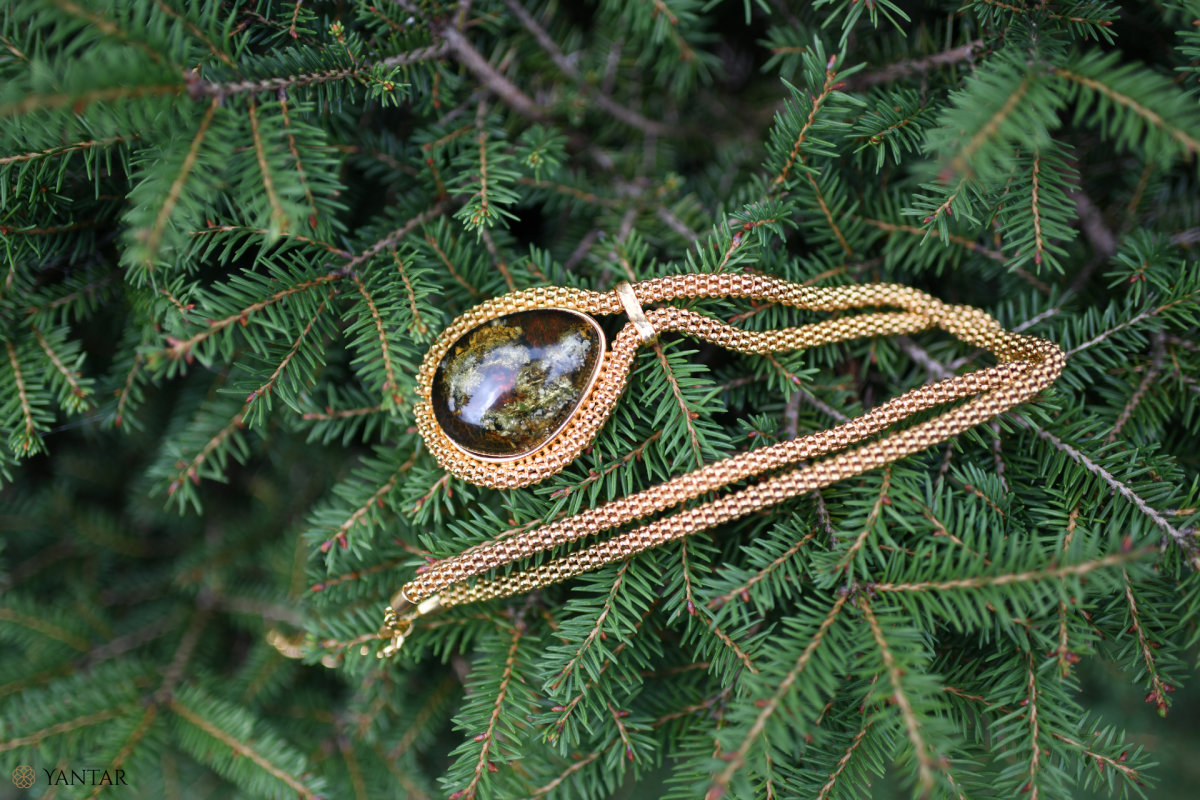The Healing Properties of Amber: Fact or Fiction?
Amber, the golden-hued fossilized tree resin, has been prized for its beauty and alleged healing properties for centuries. From ancient civilizations to modern holistic practices, amber is often touted as a natural remedy for various ailments. But are these healing properties rooted in fact or merely a product of folklore? Let’s explore the history, science, and common beliefs surrounding amber to discern the truth behind its supposed benefits. You can learn more about all the useful properties of amber and its use in various fields on the yantar.ae blog.

A Glimpse into Amber’s History
Amber has captivated humans since the Neolithic period. Early civilizations, including the Greeks, Egyptians, and Chinese, used amber not just for its aesthetic appeal but also for its perceived therapeutic properties. In ancient Rome, amber amulets were worn to protect against illness and bad luck. The Chinese believed amber could balance the body’s energies, while in medieval Europe, it was thought to ward off evil spirits.
The Alleged Healing Properties of Amber
The healing properties attributed to amber are numerous, with some of the most commonly cited benefits including:
- Pain Relief: Amber is often associated with alleviating pain, especially in teething infants. Amber necklaces are popular among parents seeking a natural remedy for their child’s discomfort.
- Anti-Inflammatory Effects: Some believe that amber has anti-inflammatory properties, making it a natural choice for treating conditions like arthritis.
- Calming and Soothing: Amber is said to have a calming effect on the mind and body, reducing stress and anxiety levels.
- Immune System Boost: It is also thought to boost the immune system and enhance the body’s ability to heal itself.
- Electromagnetic Healing: Proponents of amber therapy suggest that it can protect against the harmful effects of electromagnetic radiation.

The Science Behind Amber’s Healing Properties
While historical and anecdotal evidence suggests that amber possesses healing qualities, scientific research on this topic is limited. The primary compound in amber believed to confer its healing properties is succinic acid. Succinic acid is a natural compound found in many plants and animals, including the human body, and is involved in the body’s metabolic processes.
Succinic Acid and Pain Relief
The idea behind amber’s pain-relieving properties, particularly for teething, is that when amber is worn against the skin, body heat causes the release of trace amounts of succinic acid. This acid is then absorbed into the bloodstream, where it is said to have an analgesic effect. However, there is little scientific evidence to support this claim. Most of the support for this theory comes from anecdotal reports rather than clinical trials.
Anti-Inflammatory and Immune Support
Succinic acid is known to have antioxidant properties, which can theoretically help reduce inflammation and support the immune system. However, the amount of succinic acid that can be absorbed through the skin from amber jewelry is likely minimal, casting doubt on its effectiveness as an anti-inflammatory agent.
Calming and Soothing Effects
The calming properties attributed to amber may be more psychological than physiological. Wearing amber jewelry could serve as a form of comfort or placebo, which can have a soothing effect on the wearer. The warm, golden color of amber may also have a psychologically calming effect.
Electromagnetic Healing
The claim that amber can protect against electromagnetic radiation lacks scientific backing. There is no evidence to suggest that amber can shield the body from electromagnetic fields (EMFs).
Amber in Modern Holistic Practices
Despite the lack of robust scientific evidence, amber continues to be used in holistic and alternative medicine practices. Amber necklaces for teething babies remain popular, and many people wear amber jewelry for its perceived healing and protective properties. In addition to jewelry, amber is used in oils, balms, and tinctures, often marketed as natural remedies for pain, stress, and inflammation.
Fact or Fiction? Weighing the Evidence
So, is the healing power of amber fact or fiction? The answer lies somewhere in between. While amber has a rich history of being used for its purported therapeutic properties, modern scientific evidence to support these claims is sparse. The analgesic and anti-inflammatory effects of succinic acid are plausible, but the extent to which amber jewelry can deliver these benefits remains unproven.
Placebo Effect
The benefits some individuals experience from wearing amber could be attributed to the placebo effect. If a person believes that amber has healing properties, they may perceive an improvement in their symptoms simply because they expect it to work.
Psychological Comfort
The act of wearing amber, especially pieces with personal or cultural significance, can provide psychological comfort, which may contribute to a sense of well-being.
Complementary, Not a Cure
While amber may not be a scientifically proven cure for ailments, it can still be appreciated as a complementary approach to wellness. Its beauty and historical significance offer a form of connection to nature and tradition, which can have its own therapeutic value.
Amber’s alleged healing properties are a blend of historical tradition, anecdotal evidence, and limited scientific support. While there isn’t enough scientific proof to definitively confirm its efficacy as a natural remedy, the psychological and cultural significance of amber cannot be overlooked. Whether fact or fiction, the allure of amber endures, providing a sense of comfort and connection to the past. For those drawn to its warm glow and ancient mystique, amber remains a cherished symbol of natural beauty and holistic well-being.
When considering amber for its healing properties, it’s important to approach it with an open mind but also a healthy dose of skepticism. While it may not be a miracle cure, it can still serve as a beautiful and meaningful addition to one’s wellness journey. As with any alternative therapy, it should complement, not replace, conventional medical treatment.
|